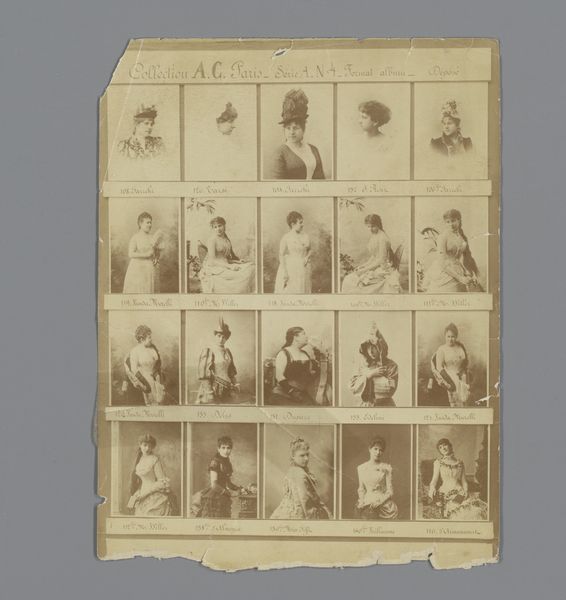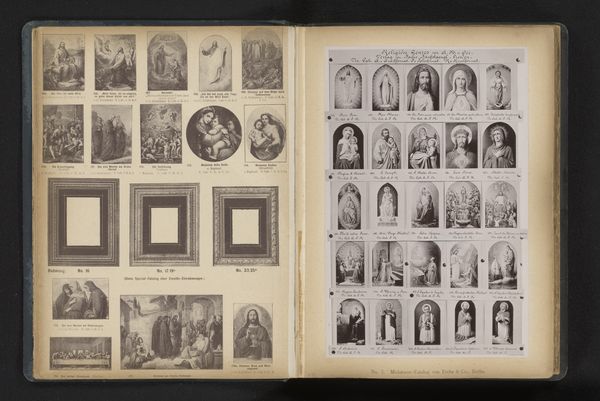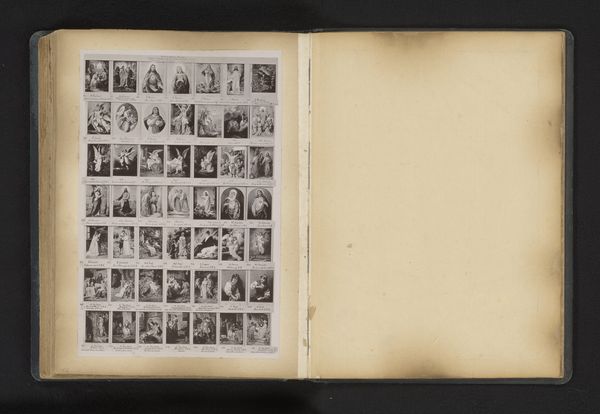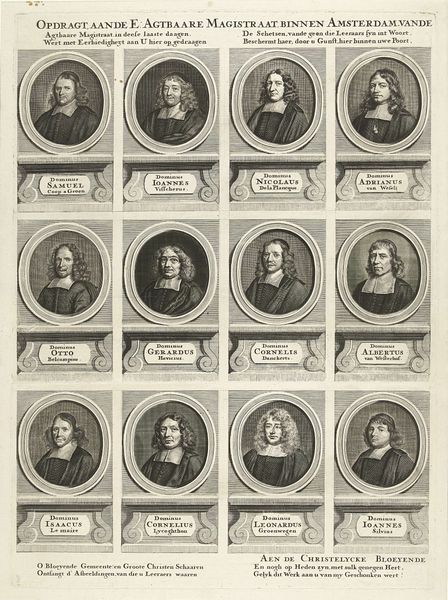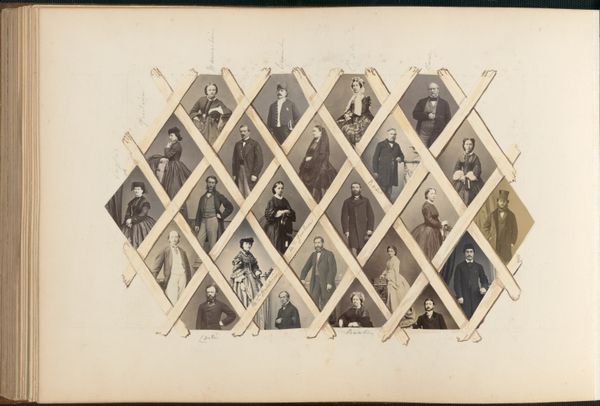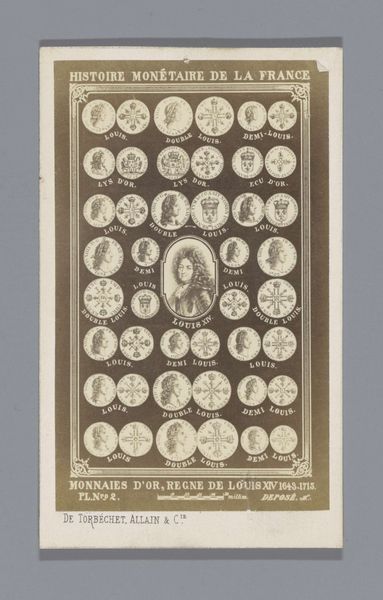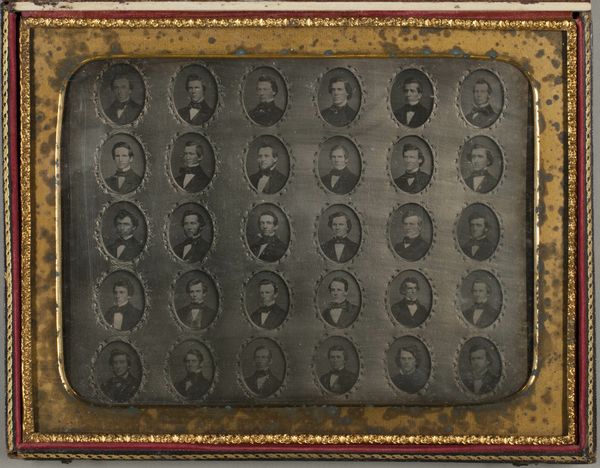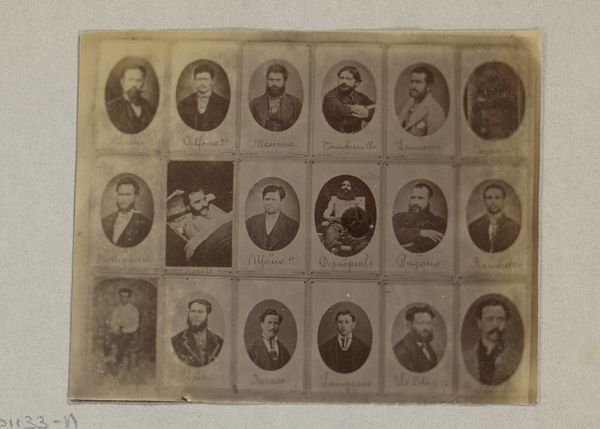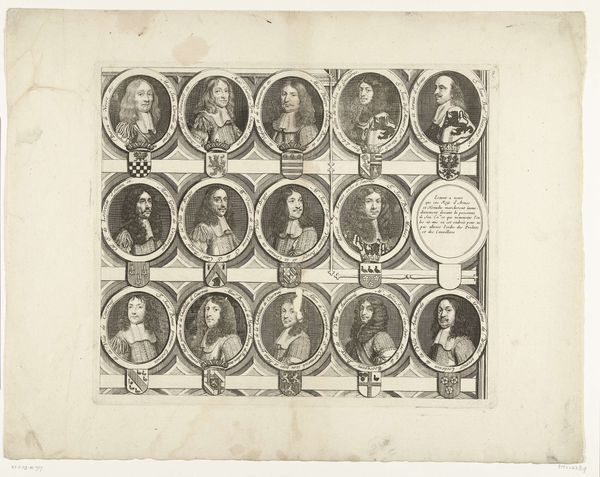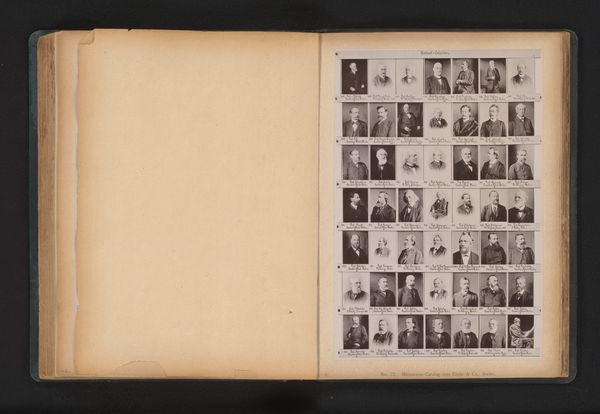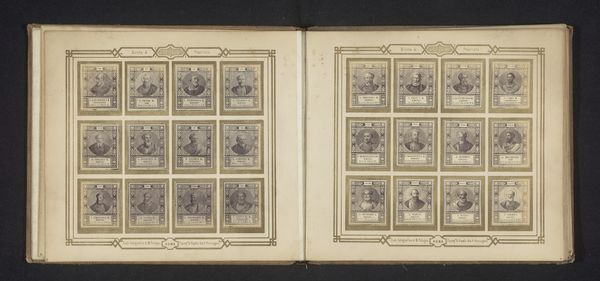
print, photography
#
portrait
# print
#
sculpture
#
asian-art
#
photography
#
group-portraits
#
decorative art
Dimensions: height 212 mm, width 277 mm, height 244 mm, width 329 mm
Copyright: Rijks Museum: Open Domain
Editor: This is an intriguing photographic print dating from around 1895-1915, titled "Fotoreproductie van vierentwintig portretten van vorstinnen van Delhi"—essentially, a photo reproduction of twenty-four portraits of Delhi princesses. It has a very formal, almost commemorative feeling to it. What do you see in this piece? Curator: This grid of portraits speaks volumes about power, representation, and the visual construction of identity within a specific cultural context. Consider the oval frames – echoing ancient Roman portraiture. The women are literally placed within idealized forms, almost like icons. What feelings do you get from these framing devices? Editor: I notice that the women all have similar poses and are elaborately dressed, though it's hard to pick out individual details. They all look serious and reserved. Is there a particular message being communicated by presenting them this way? Curator: The repetition, the serious countenances, the careful arrangement – these contribute to a collective identity, highlighting their status and lineage more than individual personalities. This visual echoes dynastic authority. How does the artist capture cultural memory through these figures? Editor: So, the visual language reinforces the idea of unbroken power, and portrays these women as symbols of something bigger. What's most memorable to me now is the sheer density of information, but with the careful arrangement that prevents chaos. Curator: Precisely. Each element carries symbolic weight, constructing a narrative of cultural continuity and regal representation across time, wouldn't you agree? It becomes an almost ritualistic arrangement of power.
Comments
No comments
Be the first to comment and join the conversation on the ultimate creative platform.
